Low testosterone in teenage males. Low Testosterone in Teenage Boys: Recognizing and Treating Hypogonadism
What are the signs of low testosterone in teenage males. How is hypogonadism diagnosed in adolescent boys. What treatment options are available for teenage hypogonadism. When should parents be concerned about delayed puberty in their sons. How does low testosterone affect a teenage boy’s development.
Understanding Hypogonadism in Teenage Males
Hypogonadism, commonly known as low testosterone, is a condition that can significantly impact the development of teenage boys. This hormonal imbalance can delay or prevent the onset of puberty, causing physical and emotional challenges for affected adolescents.
Testosterone plays a crucial role in male development, particularly during puberty. It is responsible for the development of secondary sexual characteristics, muscle growth, and overall physical maturation. When testosterone levels are low, these processes can be disrupted or delayed.
What causes low testosterone in teenage boys?
There are several potential causes of low testosterone in adolescents:

- Constitutional delay of puberty (a normal variation in developmental timing)
- Chromosomal conditions such as Klinefelter syndrome
- Certain medical treatments or medications
- Infections or injuries affecting the testes
- Genetic factors influencing puberty timing
Recent genetic research has highlighted the strong genetic basis for puberty timing. Alterations in specific genes can disrupt the typical developmental timeline, leading to delayed or abnormal pubertal progression.
Recognizing the Signs of Hypogonadism in Teens
Identifying hypogonadism in teenage boys can be challenging, as the condition is often characterized by the absence of expected developmental milestones rather than the presence of specific symptoms.
What are the key indicators of low testosterone in adolescent males?
Parents and healthcare providers should be aware of the following signs that may suggest hypogonadism in teenage boys:
- Lack of testicular enlargement
- Absence or minimal development of pubic hair
- No deepening of the voice
- Limited or no growth of facial or body hair
- Slower height increase compared to peers
- Delayed muscle development
- Minimal growth of the penis
It’s important to note that these signs become more significant if they persist beyond the age of 14, which is typically a critical period for male pubertal development.

Diagnosing Hypogonadism in Teenage Boys
If a parent or healthcare provider suspects hypogonadism in a teenage boy, several diagnostic steps can be taken to confirm the condition and identify its underlying cause.
How is low testosterone diagnosed in adolescent males?
The diagnostic process for hypogonadism in teenage boys typically involves:
- Physical examination to assess pubertal development
- Blood tests to measure testosterone levels
- Comprehensive hormone profile, including growth-related hormones
- Genetic testing if conditions like Klinefelter syndrome are suspected
Dr. Bradley Anawalt, an endocrinologist and men’s health expert at the University of Washington, emphasizes the importance of considering family history in the diagnostic process. He notes that delayed development may run in families, and this information can provide valuable context for interpreting test results.
Treatment Options for Teenage Hypogonadism
Once a diagnosis of hypogonadism is confirmed, healthcare providers can offer several treatment approaches tailored to the individual needs of the patient.

What are the available treatments for low testosterone in teenage boys?
Treatment options for hypogonadism in adolescent males include:
- Watchful waiting: In cases of constitutional delay, allowing natural development to occur over time
- Testosterone replacement therapy: Carefully administered to stimulate development without compromising growth potential
- Treatment of underlying conditions: Addressing any medical issues contributing to low testosterone
Dr. Anawalt recommends a conservative approach to testosterone replacement therapy in teenagers. He suggests using about one-fourth of the adult dose, typically administered through monthly injections for 6 to 12 months. This method aims to jumpstart the developmental process without risking premature fusion of growth plates, which could limit final adult height.
The Impact of Low Testosterone on Teenage Development
Hypogonadism can have significant physical and psychological effects on teenage boys, particularly when it results in delayed puberty compared to their peers.

How does low testosterone affect a teenage boy’s physical development?
Low testosterone levels can lead to:
- Delayed onset of puberty
- Slower physical maturation
- Reduced muscle mass and strength
- Potential for decreased bone density
- Underdeveloped secondary sexual characteristics
These physical effects can be particularly noticeable in social situations, such as in locker rooms or during physical activities, where differences in development become more apparent.
What are the psychological implications of delayed puberty in teenage boys?
The emotional and social impact of hypogonadism can be significant, potentially leading to:
- Reduced self-esteem and confidence
- Social anxiety and isolation
- Feelings of inadequacy or “falling behind” peers
- Potential for bullying or teasing
- Concerns about future fertility and sexual function
It’s crucial for parents and healthcare providers to address both the physical and psychological aspects of hypogonadism in teenage boys, providing support and reassurance throughout the treatment process.

When to Seek Medical Attention for Delayed Puberty
While some variation in pubertal timing is normal, there are situations where medical evaluation is warranted.
At what point should parents be concerned about their son’s pubertal development?
Parents should consider consulting a healthcare provider if:
- Their son shows no signs of puberty by age 14
- There is a noticeable lack of growth or development compared to peers
- The teenager expresses significant distress about his development
- There is a family history of delayed puberty or hormonal disorders
Early intervention can be crucial in managing hypogonadism effectively and minimizing its impact on a teenager’s physical and emotional well-being.
Long-term Outlook for Teenagers with Hypogonadism
With proper diagnosis and treatment, the prognosis for teenagers with hypogonadism is generally positive.
What is the long-term outlook for boys diagnosed with low testosterone?
The long-term outlook depends on several factors:
- The underlying cause of hypogonadism
- Timely diagnosis and treatment
- Response to hormone replacement therapy
- Presence of any associated conditions
In many cases, especially those involving constitutional delay, teenagers will eventually achieve normal development, either naturally or with the help of short-term hormone therapy. For those with permanent hypogonadism, ongoing management may be necessary to maintain hormone balance and support overall health.

It’s important to note that even in cases of delayed puberty, most boys will eventually catch up to their peers in terms of physical development. However, the emotional impact of the delay may require additional support and counseling.
Supporting Teenagers with Low Testosterone
Parents and caregivers play a crucial role in supporting teenagers who are dealing with hypogonadism or delayed puberty.
How can parents best support their sons with low testosterone?
To support a teenager with hypogonadism, parents can:
- Maintain open and honest communication about development and concerns
- Educate themselves about hypogonadism and treatment options
- Work closely with healthcare providers to ensure appropriate care
- Provide emotional support and reassurance
- Consider counseling or support groups if needed
- Encourage a healthy lifestyle to support overall development
It’s also important for parents to be aware of their own reactions and concerns, as these can influence how their son perceives and copes with his condition.

What role do healthcare providers play in managing teenage hypogonadism?
Healthcare providers are essential in the management of hypogonadism, offering:
- Accurate diagnosis and ongoing monitoring
- Personalized treatment plans
- Education about the condition and its management
- Coordination of care with other specialists if needed
- Support for both physical and emotional aspects of the condition
A multidisciplinary approach, involving endocrinologists, pediatricians, and mental health professionals, can provide comprehensive care for teenagers with hypogonadism.
Advances in Understanding and Treating Teenage Hypogonadism
Research into the causes and treatment of hypogonadism in teenagers continues to evolve, offering new insights and potential therapies.
What recent advances have been made in understanding teenage hypogonadism?
Recent scientific progress includes:
- Improved genetic testing to identify underlying causes
- Better understanding of the genetic basis for puberty timing
- Development of more precise hormone measurement techniques
- Ongoing research into novel treatment approaches
These advancements are helping to refine diagnostic criteria and treatment strategies, potentially leading to more personalized and effective care for teenagers with hypogonadism.

How might future treatments for low testosterone in teenagers differ from current approaches?
Future treatments may include:
- Gene therapy to address underlying genetic causes
- More targeted hormone replacement therapies with fewer side effects
- Novel approaches to stimulating natural testosterone production
- Integration of artificial intelligence in monitoring and adjusting treatment
As research progresses, the goal is to develop treatments that not only address the hormonal imbalance but also minimize potential long-term health impacts and improve overall quality of life for affected teenagers.
Navigating Social and Academic Challenges
Teenagers with hypogonadism often face unique social and academic challenges as they navigate their developmental journey.
How can schools support students with delayed puberty or hypogonadism?
Schools can provide support by:
- Educating staff about the condition and its potential impacts
- Implementing anti-bullying policies that address developmental differences
- Offering accommodations for physical education classes if needed
- Providing access to counseling services
- Fostering an inclusive environment that celebrates diversity in development
Collaboration between parents, healthcare providers, and school staff can create a supportive environment that allows affected teenagers to thrive academically and socially.
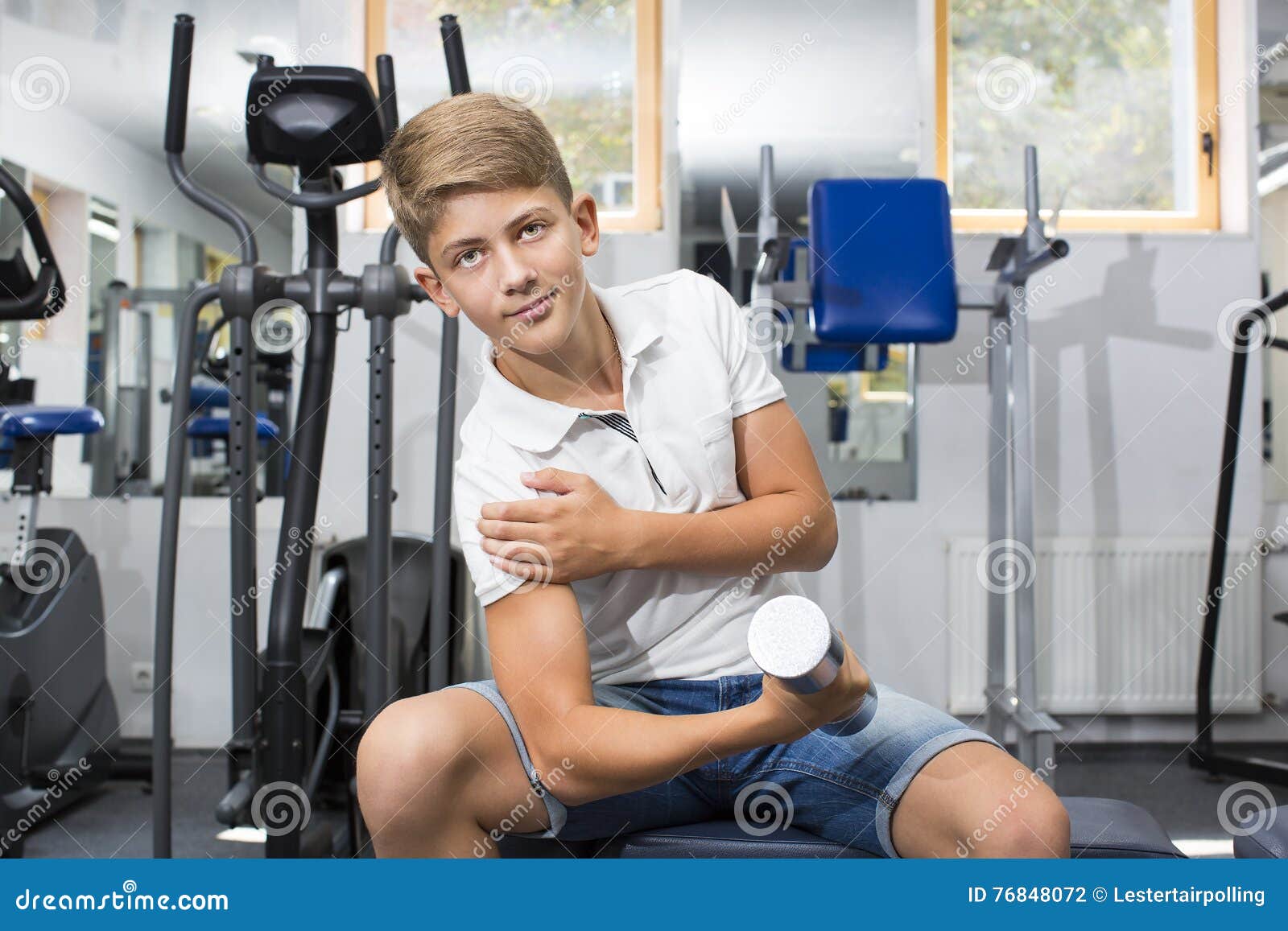
What strategies can teenagers use to cope with social challenges related to delayed development?
Teenagers dealing with hypogonadism can benefit from:
- Developing a strong support network of friends and trusted adults
- Focusing on personal strengths and interests beyond physical development
- Practicing self-advocacy and communication skills
- Engaging in activities that build confidence and self-esteem
- Seeking peer support from others with similar experiences
Encouraging teenagers to develop resilience and a positive self-image can help them navigate the social challenges associated with delayed puberty or hypogonadism.
The Role of Nutrition and Lifestyle in Testosterone Production
While hypogonadism often requires medical intervention, nutrition and lifestyle factors can play a supportive role in hormone production and overall health.
How does diet affect testosterone levels in teenage boys?
Certain dietary factors can influence testosterone production:
- Adequate protein intake to support hormone synthesis
- Healthy fats, particularly omega-3 fatty acids
- Zinc-rich foods, as zinc is crucial for testosterone production
- Vitamin D, which plays a role in hormone regulation
- Avoiding excessive sugar and processed foods
A balanced diet that supports overall health can create an optimal environment for hormone production and utilization.
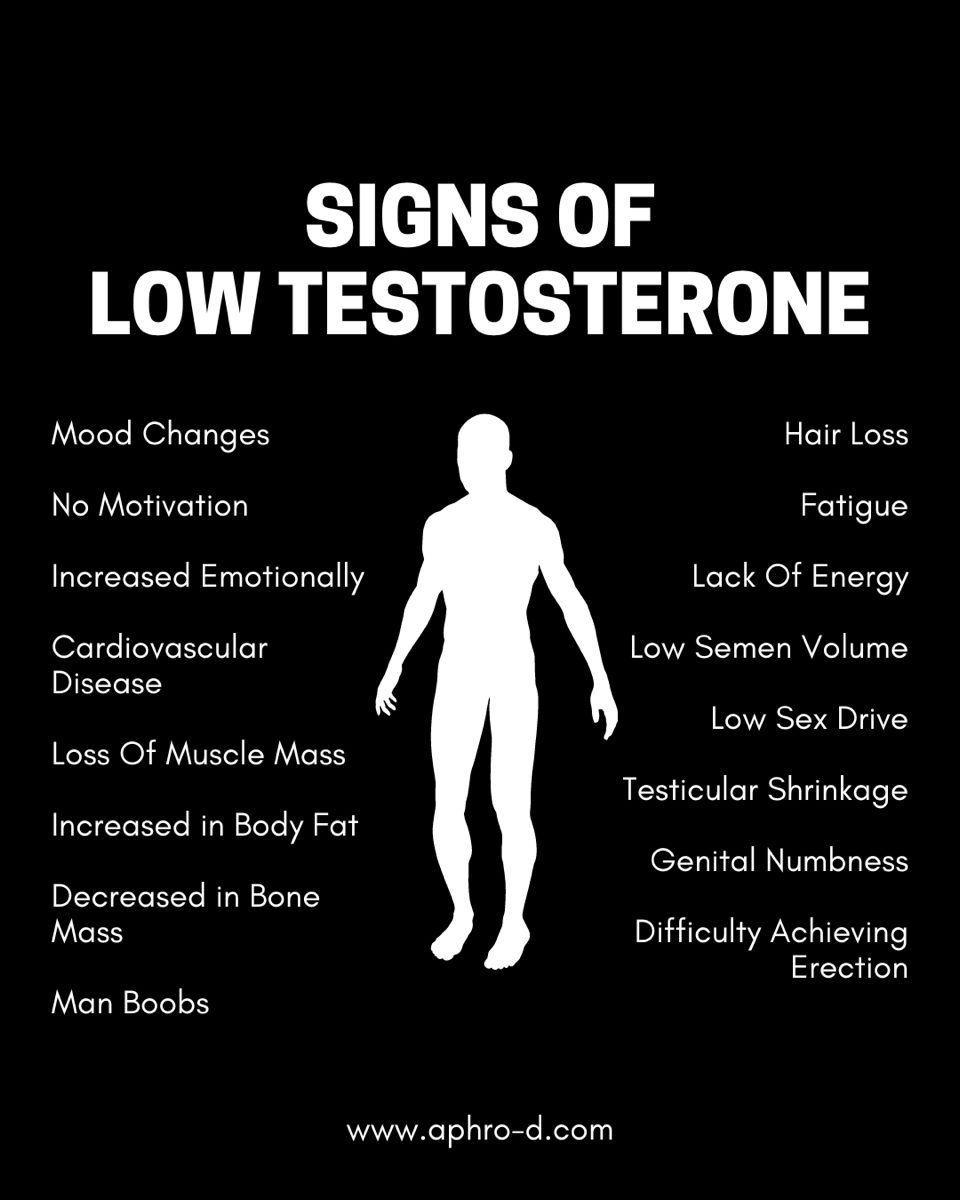
What lifestyle factors can support healthy testosterone levels in adolescents?
Lifestyle habits that may positively influence testosterone levels include:
- Regular physical activity, particularly resistance training
- Adequate sleep and stress management
- Maintaining a healthy body weight
- Avoiding exposure to endocrine-disrupting chemicals
- Limiting alcohol consumption and avoiding tobacco use
While these lifestyle factors cannot cure hypogonadism, they can support overall health and potentially enhance the effectiveness of medical treatments.
Addressing Fertility Concerns in Teenage Hypogonadism
For many teenagers with hypogonadism and their families, concerns about future fertility are common and important to address.
How does hypogonadism affect future fertility prospects?
The impact of hypogonadism on fertility can vary:
- In cases of constitutional delay, fertility is typically not affected long-term
- Some forms of hypogonadism may require ongoing hormone therapy to maintain fertility
- Certain underlying conditions, like Klinefelter syndrome, can significantly impact fertility
- Early diagnosis and treatment can often improve long-term fertility outcomes
It’s important for healthcare providers to discuss fertility implications with patients and their families, and to consider fertility preservation options when appropriate.

What options are available for preserving fertility in teenagers with hypogonadism?
Fertility preservation options may include:
- Sperm banking, if viable sperm are being produced
- Testicular tissue cryopreservation for pre-pubertal boys
- Hormone therapy to stimulate sperm production
- Ongoing monitoring of fertility potential throughout treatment
Decisions about fertility preservation should be made in consultation with fertility specialists and endocrinologists, considering the individual’s specific condition and long-term goals.
As research in the field of reproductive medicine continues to advance, new options for preserving and enhancing fertility in individuals with hypogonadism may become available, offering hope to those concerned about their future reproductive potential.
Your Teenage Son May Have Hypogonadism
Boys often hit a growth spurt at about 14 — that’s when they start to develop the muscles, physical features, deepening voice, and body hair of an adult. Low testosterone, medically known as hypogonadism in boys, may keep a young teen from developing these characteristics at the same time and pace as his peers. Hormone replacement therapy, which is essentially a small dose of testosterone, might be necessary to spur development.
“Often, the boy is the first person to notice it because, when he’s in the locker room, he starts to see that other boys are developing secondary sexual characteristics in puberty, and he isn’t,” says men’s health expert and endocrinologist Bradley Anawalt, MD, a professor of medicine at the University of Washington in Seattle. “And he’s probably more likely to talk to his father about this than his mother.”
Dr. Anawalt says that parents might not have any reason to suspect hypogonadism unless they notice that their son’s pals are sprouting up and their son isn’t. For many young men, he points out, this is simply a delay in development that will ultimately correct itself. A look at family history might even reveal that the boy’s father or other male relatives also developed slightly later than their peers. Recent genetic research strongly underscores that the timing of puberty has a genetic basis, and alterations to genes can derail the typical timing of the process. Many young men might find that simply waiting it out is the solution. However, any delayed development can be socially and emotionally difficult for a young man if it doesn’t resolve itself quickly!
For many young men, he points out, this is simply a delay in development that will ultimately correct itself. A look at family history might even reveal that the boy’s father or other male relatives also developed slightly later than their peers. Recent genetic research strongly underscores that the timing of puberty has a genetic basis, and alterations to genes can derail the typical timing of the process. Many young men might find that simply waiting it out is the solution. However, any delayed development can be socially and emotionally difficult for a young man if it doesn’t resolve itself quickly!
Hypogonadism 101: Testosterone is one of the hormones that help guide a boy’s development into a man. The gonads — glands in the testes — produce this hormone. A simple delay in a teen’s development could just mean he has low T compared to his peers at that moment. This delay, called a “constitutional delay of puberty,” can last until age 18 or 19; at that point, a continued delay could trigger greater concern.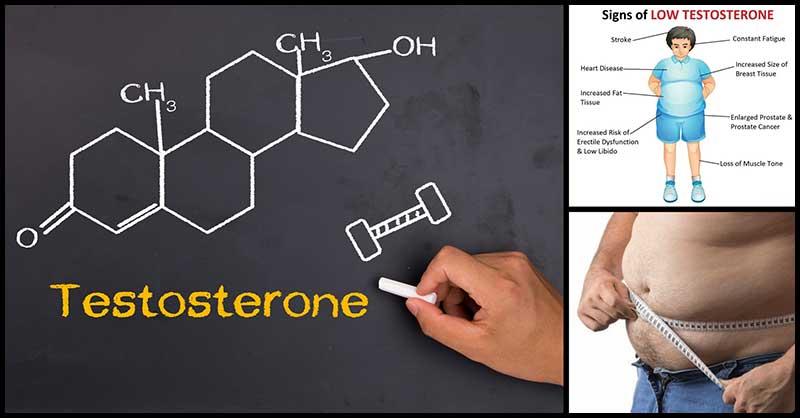
However, hypogonadism also can be the result of chromosomal conditions such as Klinefelter syndrome, in which testosterone production might decrease over time, or certain types of medical treatments, infections, and injuries.
Signs of Hypogonadism: With teen boys, hypogonadism is signaled more by what isn’t happening than by what is. For example, says Anawalt, enlarged testicles are the kick-off signal that puberty and the development of secondary sexual characteristics are on the way, but without enough testosterone, this first event doesn’t happen.
“But a boy isn’t likely to notice that his testicles haven’t enlarged,” he points out, and neither are his parents. More noticeable signs are the lack of:
- Pubic hair development
- Deepening voice
- Development of other body hair, such as facial or underarm hair
- Height or growth, compared with peers
- Muscle development, compared with peers
- Growth of penis
For boys, ages 13 and 14 are a critical period of development into puberty. If a boy hasn’t developed enlarged testicles, some body hair, and the beginnings of adult height and musculature by 14, then his doctor might consider testing for hypogonadism.
If a boy hasn’t developed enlarged testicles, some body hair, and the beginnings of adult height and musculature by 14, then his doctor might consider testing for hypogonadism.
Testing for Hypogonadism: The testing involved is fairly simple — blood tests that can check on testosterone levels and possibly a full hormone profile, including hormones related to growth. Other tests might be recommended if a boy’s doctor suspects an underlying condition such as Klinefelter syndrome. This chromosomal abnormality, which affects about 1 in 500 men, might be recognized in early childhood, but Anawalt points out that many only find out about it when they don’t experience puberty at the same rate as their friends. Low testosterone is just one part of the syndrome.
Treating Low T: Your child will have several treatment options if diagnosed with low testosterone.
Wait-and-see approach: About two-thirds of young men who have delayed development because of low testosterone will probably develop normally over time.
Testosterone replacement: Anawalt recommends giving young men only about one-fourth the dose of hormone replacement therapy that might be appropriate for low testosterone in men — just enough to jump-start the development process without endangering the young man’s growth. Too much testosterone can cause the growth plates in bone to fuse, ultimately limiting height. Anawalt prefers monthly injections for 6 to 12 months to using testosterone gel. The problem with the gel, he says, is that you can’t completely prevent it from being transferred to other people with whom the young man comes in contact, including younger siblings and romantic partners.
Low testosterone in teen males isn’t unusual, and there are options for managing it, including waiting to find out whether your boy’s body will catch up on its own.
What Is Low Testosterone? Symptoms, Causes, Diagnosis, Treatment, and Prevention
Low levels of testosterone (known as low T, or hypogonadism) is a male problem.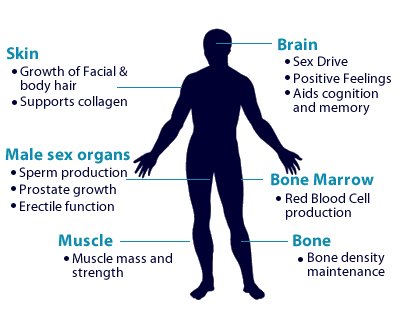 Learn about the impact that low levels of testosterone can have on men…
Learn about the impact that low levels of testosterone can have on men…
By Beth Levine
What Is Testosterone Replacement Therapy?
Testosterone, the primary sex hormone in men, is responsible for many physical characteristics that are considered male or masculine. The testosterone…
By Cathy Garrard
Testosterone and Men’s Health
Testosterone, the primary sex hormone in men, is responsible for many physical characteristics that are considered male or masculine. The testosterone…
By Cathy Garrard
Testosterone May Aid Memory in Men With Uncontrolled Diabetes
Men with both type 2 diabetes and low testosterone performed better on memory tests when they took testosterone replacement therapy, a small experiment…
By Lisa Rapaport
Low Testosterone and Sleep
Low testosterone can interfere with your ability to get a good night’s sleep and poor sleep can lead to lower testosterone levels. Get tips to break this…
Get tips to break this…
By Madeline R. Vann, MPH
6 Weight Loss Tips for Men With Low Testosterone
Men who carry excess pounds may be putting themselves at risk for low testosterone. These weight loss tips can help boost your testosterone naturally….
By Regina Boyle Wheeler
6 Strange Warning Signs of Low Testosterone
Low T affects your whole body. Changing cognition, dry skin, and heart attack all could be signs of low testosterone levels.
By Madeline R. Vann, MPH
6 Ways You’re Ruining Your Testosterone
Extra weight, hair-loss treatments, and a sedentary lifestyle are among the factors that can lower testosterone levels.
By Madeline R. Vann, MPH
11 Ways to Boost Sex Drive With Low T
Low testosterone can result in low libido. Learn how exercise, diet, sleep, and other good habits can help you get your groove back.
Learn how exercise, diet, sleep, and other good habits can help you get your groove back.
By Madeline R. Vann, MPH
Low Testosterone in Women
Women need small amounts of testosterone as part of the mix of hormones that keep mood, energy levels, sex drive, and bodily functions working smoothly…
By Madeline R. Vann, MPH
Low Testosterone in Adolescents & Young Adults
1. Harman SM, Metter EJ, Tobin JD, Pearson J, Blackman MR. Longitudinal effects of aging on serum total and free testosteronal levels in healthy men. Baltimore longitudinal study of aging. J Clin Endocrinol Metab. (2001) 86:724–31. 10.1210/jcem.86.2.7219 [PubMed] [CrossRef] [Google Scholar]
2. Bhasin S, Cunningham GR, Hayes FJ, Matsumoto AM, Snyder PJ, Swerdloff RS, et al.. Testosterone therapy in adult men with androgen deficiency syndromes: an endocrine society clinical practice guideline. J Clin Endocrinol Metab. (2006) 91:1995–2010. 10.1210/jc.2005-2847 [PubMed] [CrossRef] [Google Scholar]
J Clin Endocrinol Metab. (2006) 91:1995–2010. 10.1210/jc.2005-2847 [PubMed] [CrossRef] [Google Scholar]
3. Zirkin BR, Tenover JL. Aging and declining testosterone: past, present, and hopes for the future. J Androl. (2012) 33:1111–8. 10.2164/jandrol.112.017160 [PMC free article] [PubMed] [CrossRef] [Google Scholar]
4. Basaria S, Harman SM, Travison TG, Hodis H, Tsitouras P, Budoff M, et al.. Effects of testosterone administration for 3 years on subclinical atherosclerosis progression in older men with low or low-normal testosterone levels: a randomized clinical trial. JAMA. (2015) 314:570–81. 10.1001/jama.2015.8881 [PubMed] [CrossRef] [Google Scholar]
5. Mulligan T, Frick MF, Zuraw QC, Stemhagen A, McWhirter C. Prevalence of hypogonadism in males aged at least 45 years: the HIM study. Int J Clin Pract. (2006) 60:762–9. 10.1111/j.1742-1241.2006.00992.x [PMC free article] [PubMed] [CrossRef] [Google Scholar]
6. Miller WL. Early steps in androgen biosynthesis: from cholesterol to DHEA.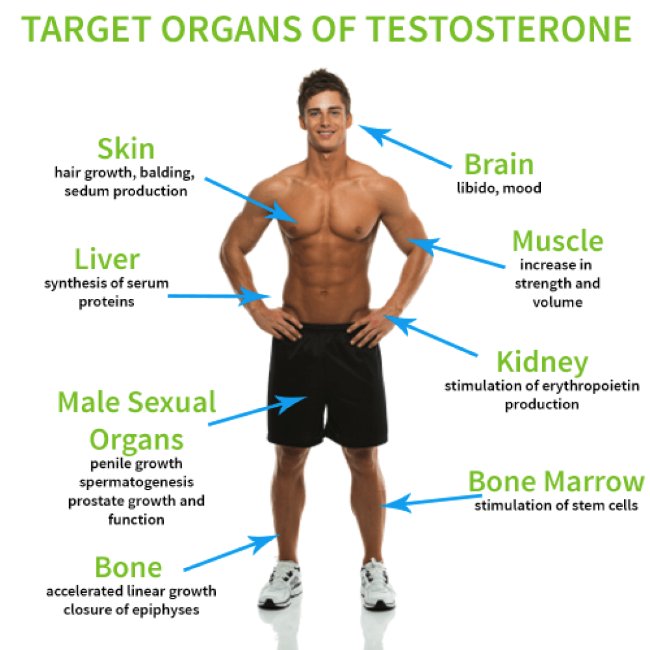 Baillieres Clin. Endocrinol. Metab. (1998) 12:67–81. 10.1016/S0950-351X(98)80461-8 [PubMed] [CrossRef] [Google Scholar]
Baillieres Clin. Endocrinol. Metab. (1998) 12:67–81. 10.1016/S0950-351X(98)80461-8 [PubMed] [CrossRef] [Google Scholar]
7. Feldman HA, Longcope C, Derby CA, Johannes CB, Araujo AB, Coviello Ad, et al.. Age trends in the level of serum testosterone and other hormones in middle-aged men: longitudinal results from the Massachusetts male aging study. J Clin Endocrinol Metab. (2002) 87:589–98. 10.1210/jcem.87.2.8201 [PubMed] [CrossRef] [Google Scholar]
8. Wu FC, Tajar A, Pye SR, Silman AJ, Finn JD, O’Neill TW, et al.. Hypothalamic-pituitary-testicular axis disruptions in older men are differentially linked to age and modifiable risk factors: the European male aging study. J Clin Endocrinol Metab. (2008) 93:2737–45. 10.1210/jc.2007-1972 [PubMed] [CrossRef] [Google Scholar]
9. Mohr BA, Bhasin S, Link CL, O’Donnell AB, McKinlay JB. The effect of changes in adiposity on testosterone levels in older men: longitudinal results from the Massachusetts male aging study. Eur J Endocrinol. (2006) 155:443–52. 10.1530/eje.1.02241 [PubMed] [CrossRef] [Google Scholar]
(2006) 155:443–52. 10.1530/eje.1.02241 [PubMed] [CrossRef] [Google Scholar]
10. Grinspon RP, Freire AV, Rey RA. Hypogondism in pediatric health: adult medicine concepts fail. Trends Endocrinol Metab. (2019) 30:879–90. 10.1016/j.tem.2019.08.002 [PubMed] [CrossRef] [Google Scholar]
11. Scovell JM, Ramasamy R, Wilken N, Kovac JR, Lipshultz LI. Hypogonadal symptoms in young men are associated with a serum total testosterone threshold of 400 ng/dL. BJU Int. (2015) 116:142–46. 10.1111/bju.12970 [PubMed] [CrossRef] [Google Scholar]
12. Salonia A, Rastrelli G, Hackett G, Seminara S, Huhtaniemi IT, Rey RA, et al.. Pediatric and adult onset hypogonadism. Nat Rev. (2019) 5:1–21. 10.1038/s41572-019-0087-y [PMC free article] [PubMed] [CrossRef] [Google Scholar]
13. Tsametis CP, Isidori AM. Testosterone replacement therapy: for whom, when and how?
Metab Clin Exp. (2018) 86:69–78. 10.1016/j.metabol.2018.03.007 [PubMed] [CrossRef] [Google Scholar]
14. Sedlmeyer IL. Delayed puberty: analysis of a large case series from an academic center. J Clin Endocrinol Metab. (2002) 87:1613–20. 10.1210/jcem.87.4.8395 [PubMed] [CrossRef] [Google Scholar]
J Clin Endocrinol Metab. (2002) 87:1613–20. 10.1210/jcem.87.4.8395 [PubMed] [CrossRef] [Google Scholar]
15. Lawaetz JG, Hagen CP, Mieritz MG, Blomberg Jensen M, Petersen JH, Juul A, et al.. Evaluation of 451 Danish boys with delayed puberty: diagnostic use of a new puberty nomogram and effects of oral testosterone therapy. J Clin Endocrinol Metab.
100:1376–85. 10.1210/jc.2014-3631 [PubMed] [CrossRef] [Google Scholar]
16. Varimo T, Miettinen PJ, Känsäkoski J, Raivio T, Hero M. Congenital hypogonadotropic hypogonadism, functional hypogonadotropism or constitutional delay of growth and puberty? An analysis of a large patient series from a single tertiary center. Hum Reprod. (2016) 32:147–53. 10.1093/humrep/dew294 [PubMed] [CrossRef] [Google Scholar]
17. Abitbol L, Zborovski S &, Palmert M. R. Evaluation of delayed puberty: what diagnostic tests should be performed in the seemingly otherwise well adolescent?
Arch Dis Child. (2016) 101:767–71. 10.1136/archdischild-2015-310375 [PubMed] [CrossRef] [Google Scholar]
18. Rastrelli G, O’Neill TW, Ahern T, Bártfai G, Casanueva FF, Forti G, et al.. Symptomatic androgen deficiency develops only when both total and free testosterone decline in obese men who may have incident biochemical secondary hypogonadism: prospective results from the EMAS. Clin. Endocrinol. (2018) 18:459–69. 10.1111/cen.13756 [PubMed] [CrossRef] [Google Scholar]
Rastrelli G, O’Neill TW, Ahern T, Bártfai G, Casanueva FF, Forti G, et al.. Symptomatic androgen deficiency develops only when both total and free testosterone decline in obese men who may have incident biochemical secondary hypogonadism: prospective results from the EMAS. Clin. Endocrinol. (2018) 18:459–69. 10.1111/cen.13756 [PubMed] [CrossRef] [Google Scholar]
19. Shi Z, Araujo AB, Martin S, O’Loughlin P, Wittert GA. Longitudinal changes in testosterone over five years in community-dwelling men. J Clin Endocrinol Metab. (2013) 98:3289–97. 10.1210/jc.2012-3842 [PubMed] [CrossRef] [Google Scholar]
20. Peterson M, Belakovskiy A, McGrath R, Yarrow J. Testosterone deficiency, weakness, and multimorbidity in men. Sci Rep. (2018) 8:1–9. 10.1038/s41598-018-24347-6 [PMC free article] [PubMed] [CrossRef] [Google Scholar]
21. Poobalan A, Aucott L. Obesity among young adults in developing countries: a systematic overview. Curr Obes Rep. (2016) 5:2–13. 10.1007/s13679-016-0187-x [PMC free article] [PubMed] [CrossRef] [Google Scholar]
22. Wu FC, Tajar A, Beynon JM, Pye SR, Silman AJ, Finn JD, et al.. Identification of late-onset hypogonadism in middle-aged and elderly men. N Engl J Med. (2010) 363:123–35. 10.1056/NEJMoa0911101 [PubMed] [CrossRef] [Google Scholar]
Wu FC, Tajar A, Beynon JM, Pye SR, Silman AJ, Finn JD, et al.. Identification of late-onset hypogonadism in middle-aged and elderly men. N Engl J Med. (2010) 363:123–35. 10.1056/NEJMoa0911101 [PubMed] [CrossRef] [Google Scholar]
23. Levine H, Jørgensen N, Martino-Andrade A, Mendiola J, Weksler-Derri D, Mindlis I, et al.. Temporal trends in sperm count: a systematic review and meta-regression analysis. Hum Reprod Update. (2017) 23:646–59. 10.1093/humupd/dmx022 [PMC free article] [PubMed] [CrossRef] [Google Scholar]
24. Hamman RF, Bell RA, Dabelea D, D’Agostino RB, Jr., Dolan L, Imperatore G, et al.. The SEARCH for diabetes in youth study: rationale, findings, and future directions. Diabetes Care. (2014) 37:3336–44. 10.2337/dc14-0574 [PMC free article] [PubMed] [CrossRef] [Google Scholar]
25. Chosich J, Bradford AP, Allshouse AA, Reusch JE, Santoro N, Schauer IE, et al.. Acute recapitulation of the hyperinsulinemia and hyperlipidemia characteristic of metabolic syndrome suppresses gonadotropins.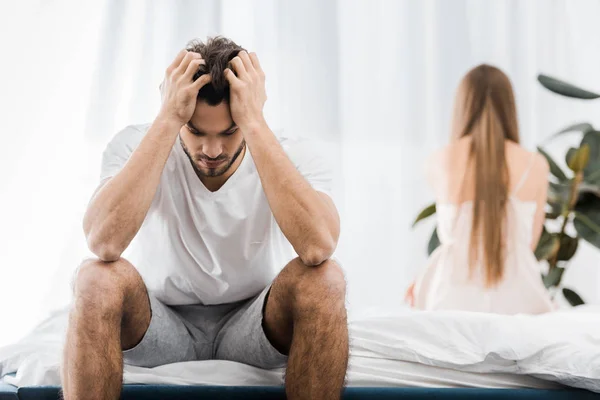 Obesity. (2017) 25:553–60. 10.1002/oby.21754 [PMC free article] [PubMed] [CrossRef] [Google Scholar]
Obesity. (2017) 25:553–60. 10.1002/oby.21754 [PMC free article] [PubMed] [CrossRef] [Google Scholar]
26. Vowles KE, McEntee ML, Julnes PS, Frohe T, Ney JP, van der Goes DN. Rates of opioid misuse, abuse, and addiction in chronic pain: a systematic review and data synthesis. Pain. (2015) 156:569–76. 10.1097/01.j.pain.0000460357.01998.f1 [PubMed] [CrossRef] [Google Scholar]
27. Grover S, Mattoo SK, Pendharkar S, Kandappan V. Sexual dysfunction in patients with alcohol and opioid dependence. Indian J Psychol Med. (2014) 36:355–65. 10.4103/0253-7176.140699 [PMC free article] [PubMed] [CrossRef] [Google Scholar]
28. O’rourke TK, Wosnitzer MS. Opioid-induced androgen deficiency (OPIAD): prevalence, consequence, and efficacy of testosterone replacement. Curr Urol Rep. (2016) 17:76. 10.1007/s11934-016-0634-y [PubMed] [CrossRef] [Google Scholar]
29. Kristensen DM, Desdoits-Lethimonier C, Mackey AL, Dalgaard MD, de Masi F, Munkbol CH, et al.. Ibuprofen alters human testicular physiology to produce a state of compensated hypogonadism. Proc Natl Acad Sci USA. (2018) 115:715–24. 10.1073/pnas.1715035115 [PMC free article] [PubMed] [CrossRef] [Google Scholar]
Proc Natl Acad Sci USA. (2018) 115:715–24. 10.1073/pnas.1715035115 [PMC free article] [PubMed] [CrossRef] [Google Scholar]
30. Christou MA, Christou PA, Markozannes G, Tsatsoulis A, Mastorakos G, Tigas S. Effects of anabolic androgenic steroids on the reproductive system of athletes and recreational users: a systematic review and meta-analysis. Sports Med. (2017) 47:1869–83. 10.1007/s40279-017-0709-z [PubMed] [CrossRef] [Google Scholar]
31. Durairajanayagam D. Lifestyle causes of male infertility. Arab J Urol. (2018) 16:10–20. 10.1016/j.aju.2017.12.004 [PMC free article] [PubMed] [CrossRef] [Google Scholar]
32. Harlev A, Agarwal A, Gunes SO, Shetty A, du Plessis SS. Smoking and male infertility: an evidence-based review. World J Mens Health. (2015) 33:143–60. 10.5534/wjmh.2015.33.3.143 [PMC free article] [PubMed] [CrossRef] [Google Scholar]
33. Chiu YH, Afeiche MC, Gaskins AJ, Williams PL, Petrozza JC, Tanrikut C, et al.. Fruit and vegetable intake and their pesticide residues in relation to semen quality among men from a fertility clinic. Hum Reprod. (2015) 30:1342–51. 10.1093/humrep/dev064 [PMC free article] [PubMed] [CrossRef] [Google Scholar]
Hum Reprod. (2015) 30:1342–51. 10.1093/humrep/dev064 [PMC free article] [PubMed] [CrossRef] [Google Scholar]
34. Buck Louis GM, Sundaram R, Schisterman EF, Sweeney AM, Lyunch CD, Gore-Langton RE, et al.. Heavy metals and couple fecundity, the LIFE Study. Chemosphere. (2012) 87:1201–7. 10.1016/j.chemosphere.2012.01.017 [PMC free article] [PubMed] [CrossRef] [Google Scholar]
35. Bhasin S, Brito JP, Cunningham GR, Hayes FJ, Hodis HN, Matsumoto AM, et al.. Testosterone therapy in men with hypogonadism: an endocrine society clinical practice guideline. J Clin Endocrinol Metab. (2018) 103:1715–44. 10.1210/jc.2018-00229 [PubMed] [CrossRef] [Google Scholar]
36. Mulhall JP, Trost LW, Brannigan RE, Kurtz EG, Redmon JB, Chiles KA, et al.. Evaluation and management of testosterone deficiency: AUA Guideline. American Urological Association Education and Research, Inc. J Urol. (2018) 200:423–32. 10.1016/j.juro.2018.03.115 [PubMed] [CrossRef] [Google Scholar]
37. El Meliegy A, Motawi A, ElSalam MAA.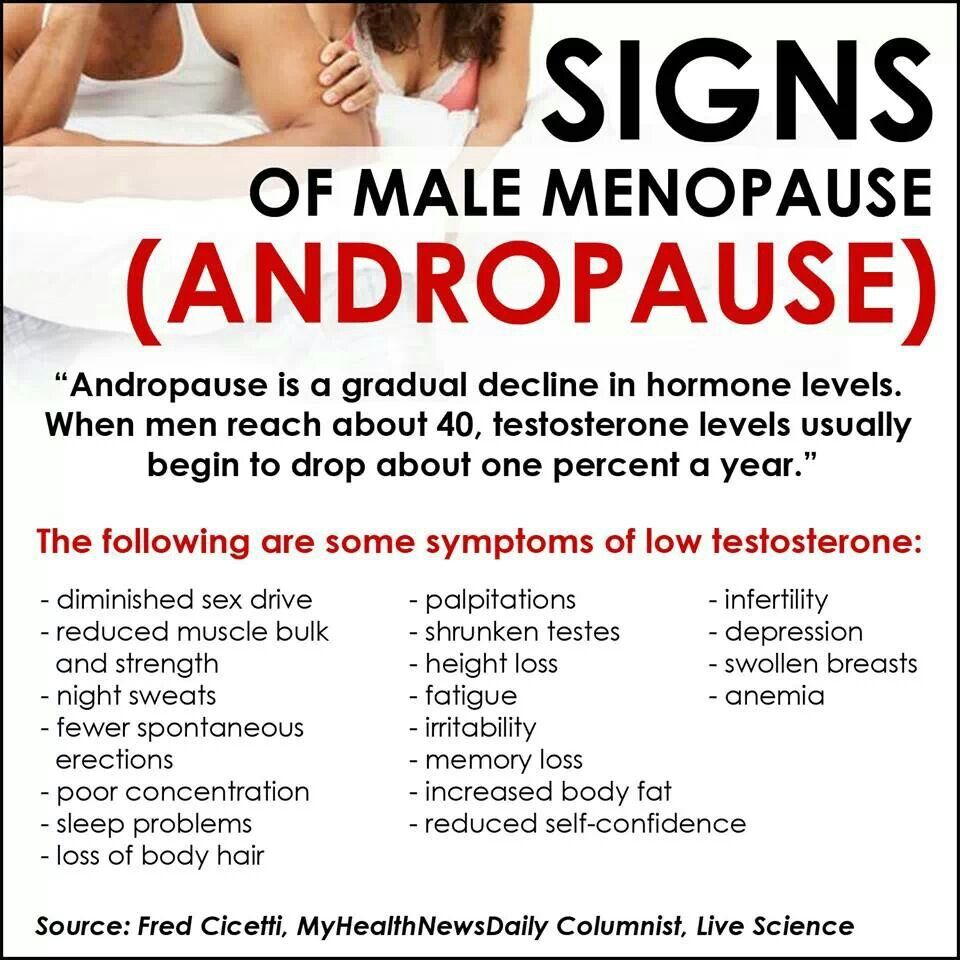 Systematic review of hormone replacement therapy in the infertile man. Arab J Urol. (2018) 16:140–7. 10.1016/j.aju.2017.11.011 [PMC free article] [PubMed] [CrossRef] [Google Scholar]
Systematic review of hormone replacement therapy in the infertile man. Arab J Urol. (2018) 16:140–7. 10.1016/j.aju.2017.11.011 [PMC free article] [PubMed] [CrossRef] [Google Scholar]
38. Crosnoe-Shipley LE, Elkelany OO, Cyrus DR, Kim ED. Treatment of hypogonadotropic male hypogonadism: case-based scenarios. World J Nephrol. (2015) 4:245–53. 10.5527/wjn.v4.i2.245 [PMC free article] [PubMed] [CrossRef] [Google Scholar]
39. Hakonsen BL, Thulstrup AM, Aggerholm AS, Olsen J, Bonde JP, Andersen CY, et al.. Does weight loss improve semen quality and reproductive hormones. Reprod Health. (2011) 24:1–8. 10.1186/1742-4755-8-24 [PMC free article] [PubMed] [CrossRef] [Google Scholar]
40. Hackett G, Cole N, Bhartia M, Kennedy D, Raju J, Wilkinson P; BLAST Study Group, et al.. Testosterone replacement therapy improves metabolic parameters in hypogonadal men with type 2 diabetes but not in men with coexisting depression: the BLAST study. J Sex Med. (2014) 11:840–56. 10.1111/jsm.12404 [PubMed] [CrossRef] [Google Scholar]
41.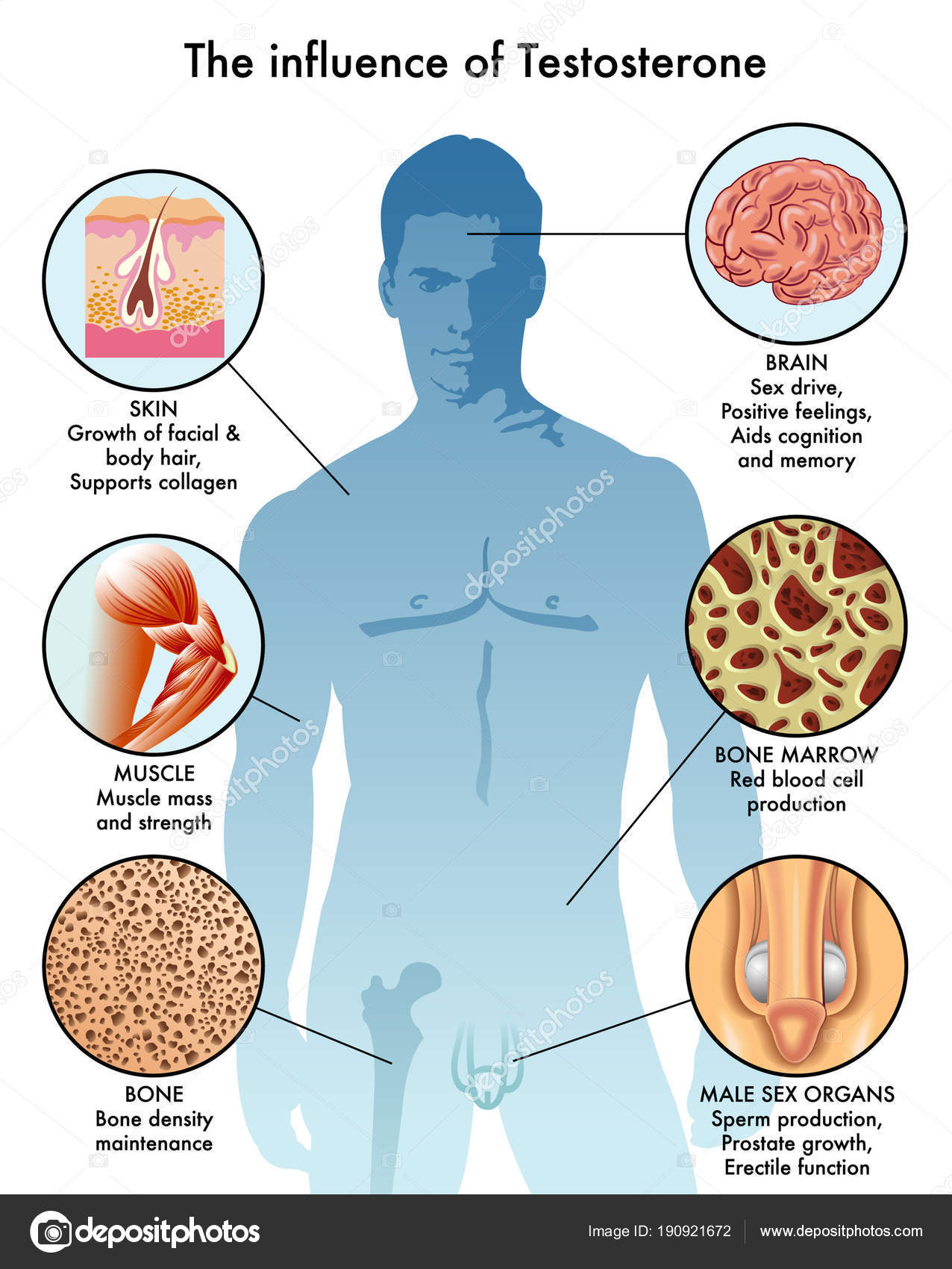 Alder NJ, Keihani S, Stoddard GJ, Myers JB, Hotaling JM. Combination therapy with clomiphene citrate and anastrozole is a safe and effective alternative for hypoandrogenic subfertile men. BJU Int. (2018) 122:688–94. 10.1111/bju.14390 [PubMed] [CrossRef] [Google Scholar]
Alder NJ, Keihani S, Stoddard GJ, Myers JB, Hotaling JM. Combination therapy with clomiphene citrate and anastrozole is a safe and effective alternative for hypoandrogenic subfertile men. BJU Int. (2018) 122:688–94. 10.1111/bju.14390 [PubMed] [CrossRef] [Google Scholar]
42. Dadhich P, Ramasamy R, Scovell J, Wilken N, Lipshultz L. Testosterone versus clomiphene citrate in managing symptoms of hypogonadism in men. Indian J Urol. (2017) 33:236–40. 10.4103/iju.IJU_372_16 [PMC free article] [PubMed] [CrossRef] [Google Scholar]
43. de Ronde W, de Jong FH. Aromatase inhibitors in men: effects and therapeutic options. Reprod Biol Endocrinol. (2011) 9:93. 10.1186/1477-7827-9-93 [PMC free article] [PubMed] [CrossRef] [Google Scholar]
44. Masterson T, Molina M, Ibrahim E, Ramasamy R. Natesto Effects on reproductive hormones and semen parameters: results from an ongoing single-center, investigator-initiated phase IV clinical trial. EU. (2018) 4:333–5. 10.1016/j.euf.2018.08.009 [PubMed] [CrossRef] [Google Scholar]
45.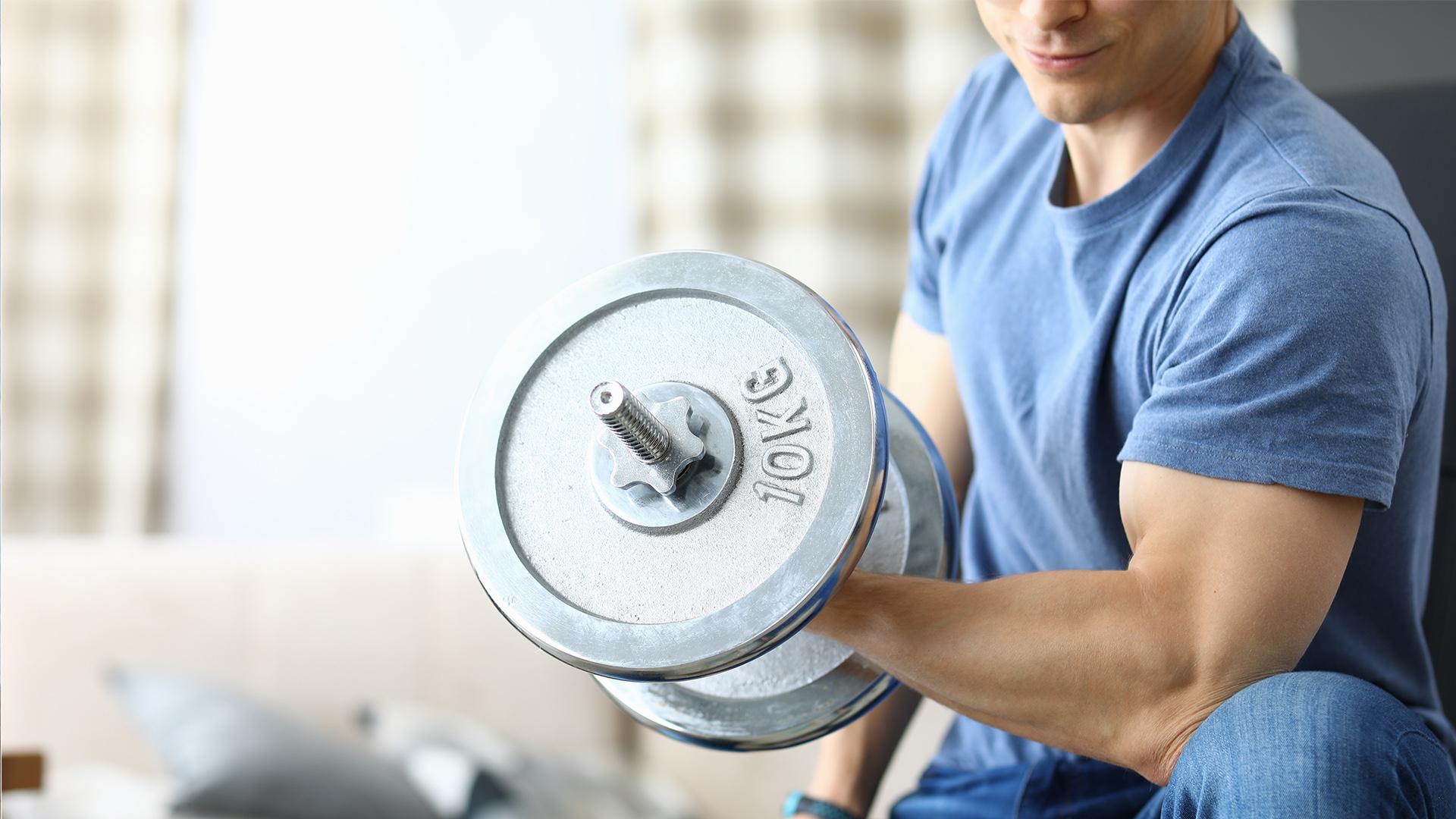 Layton JB, Li D, Meier CR, Sharpless JL, Stürmer T, Jick SS, et al.. Testosterone lab testing and initiation in the United Kingdom and the United States, 2000 to 2011. J Clin Endocrinol Metab. (2014) 99:835–42. 10.1210/jc.2013-3570 [PMC free article] [PubMed] [CrossRef] [Google Scholar]
Layton JB, Li D, Meier CR, Sharpless JL, Stürmer T, Jick SS, et al.. Testosterone lab testing and initiation in the United Kingdom and the United States, 2000 to 2011. J Clin Endocrinol Metab. (2014) 99:835–42. 10.1210/jc.2013-3570 [PMC free article] [PubMed] [CrossRef] [Google Scholar]
The best advice on how to increase the level of total testosterone in men
Testosterone is the main male hormone, which, in fact, makes a man out of a man. This substance, produced in the testicles (in men), ovaries (in women) and in the adrenal cortex, is responsible for the formation of secondary sexual characteristics according to the male type (hairiness, a rough deep voice, etc.), and also promotes muscle growth and forms libido. .
Contents
- What is the effect of testosterone on the body?
- Total testosterone levels for men
- What is the norm of testosterone in women?
- Symptoms of low testosterone
- How can I self-diagnose low testosterone?
- Treatment of testosterone deficiency
- How to increase testosterone with folk remedies?
The peak of production of this hormone falls on adolescence, when gender formation takes place, and a body type is formed according to a certain type. With age, the concentration of free testosterone in the blood of men decreases, reaching a critical level of about 50 years. To slow down the aging process, replacement therapy is used as a medicine, that is, testosterone is introduced into the body of a man from the outside.
With age, the concentration of free testosterone in the blood of men decreases, reaching a critical level of about 50 years. To slow down the aging process, replacement therapy is used as a medicine, that is, testosterone is introduced into the body of a man from the outside.
In this article, we practitioners of the Hormone Health Clinic will tell you:
- Why is testosterone so important for a normal active life for both men and women?
- How to maintain its level in the blood at a normal level without resorting to drugs?
What is the effect of testosterone on the body?
The production of testosterone by the body in men is the most important factor in the formation of not only the external image of the masculine type, but also has a huge impact on health and well-being.
Normal free testosterone levels allow:
- Build muscle mass. That is why many athletes take testosterone preparations in the hope of gaining the coveted muscle corset as soon as possible.

- Increase endurance and the body’s ability to endure high physical exertion. This is the second reason why testosterone injections are so common in amateur sports.
- Get rid of body fat more effectively by using it for energy during physical activity.
- Maintain a high level of libido. It is believed that some men (and women too) owe a high level of sexual activity to testosterone. At the same time, sex is the first way to increase natural testosterone without resorting to medication. Here is such a vicious circle!
- Maintain optimal bone density for years to come. Testosterone is an excellent prevention of osteoporosis, which affects most men and women with age.
- Confront depression and stay positive and optimistic.
- Actively work and relax. In general, leadership qualities of people are more dependent on the level of free testosterone in the blood than on upbringing and heredity.
Thus, it becomes obvious that testosterone is important not only for men, but also for women. And even though its concentration in the blood of the former is much higher than that of the latter, this hormone cannot be attributed to “purely male”.
And even though its concentration in the blood of the former is much higher than that of the latter, this hormone cannot be attributed to “purely male”.
Norms of total testosterone in men
It’s no secret that testosterone levels (and hormones in general) fluctuate throughout life and even throughout the day. For each, this level will be individual, depending on heredity, health status and many other factors.
Average rates of free testosterone for men depending on age are shown in the table below.
| Man’s age | Blood testosterone value (ng/dl) |
| 0-12 months | 0.2-3.1 |
| 1-8 years | 0.04-0.11 |
| 9-10 years old | 0.04-1.26 |
| 11-18 years old | 0.04-21.8 |
| 19-30 years old | 5.25-19.8 |
| 30-45 years old | 4.85-17.1 |
| 45-55 years old | 4.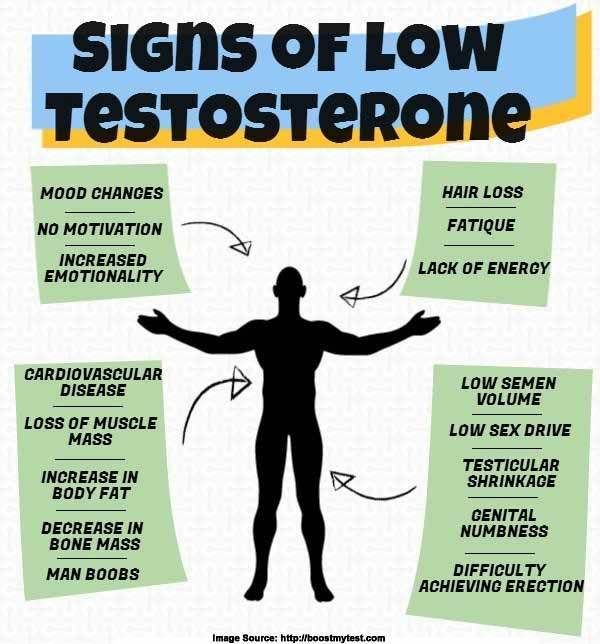 26-15.6 26-15.6 |
| 55-65 years old | 4.06-13.9 |
| 65-75 years old | 3.47-12.2 |
| 75-85 years old | 3.08-10.5 |
| 85-95 years old | 2.69-8.76 |
| over 95 | 2.29-7.91 |
Reduced or, conversely, increased levels of testosterone in men at first simply worsens the quality of life, however, if the problem is not given due attention, then hormonal imbalance can provoke the development of real diseases.
What is the normal testosterone level for women?
Testosterone is extremely important for women too. There is a strong relationship between the level of this hormone and libido, as well as between good mood, physical activity and business leadership qualities. Wise nature decreed that increased testosterone levels in women are not so common. The fact is that in the female body, estrogen (female hormones) is easily synthesized from testosterone, so women do not grow mustaches, and their voice remains relatively high.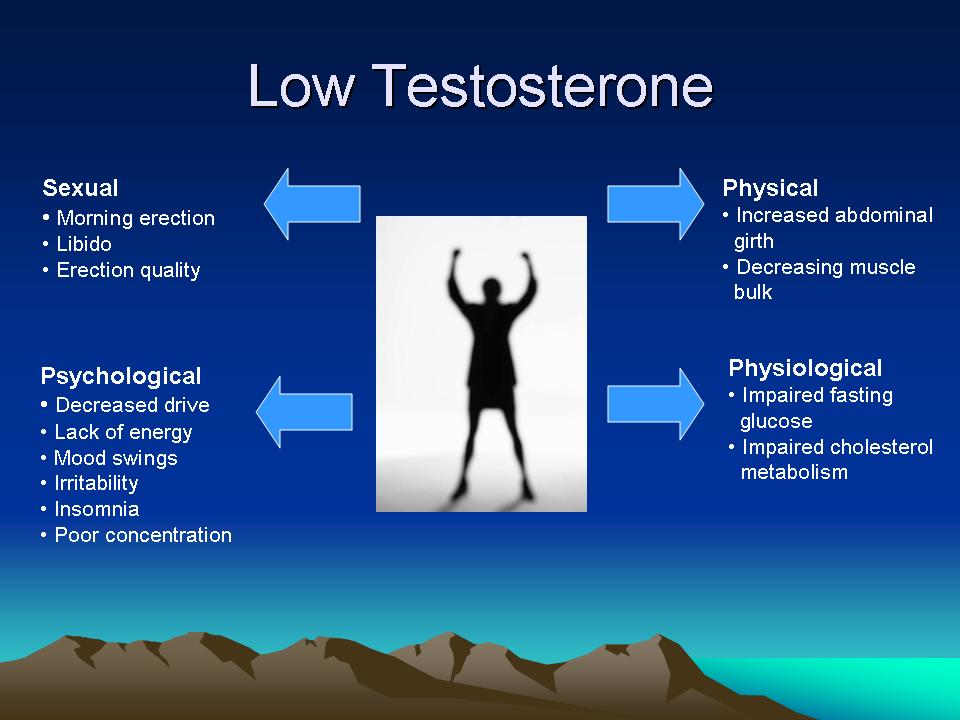 The change in the concentration of progesterone in the blood depending on the age of the woman is shown in the table below.
The change in the concentration of progesterone in the blood depending on the age of the woman is shown in the table below.
| Age | Testosterone concentration (nmol/l) |
| Up to 1 year | 0-2.31 |
| 1-6 years | 0-1.22 |
| 6-11 years old | 0.49-1.82 |
| 11-15 years old | 0.84-4.46 |
| 15-18 years old | 1.36-4.73 |
| Over 18 | 0.31-3.78 |
| Pregnancy | The indicator is increased by 3-4 times compared to the usual indicator |
| When taking oral contraceptives | 0.45-2.88 |
| Postmenopausal | less than 1.7 |
Symptoms of low testosterone
Usually, the symptoms and signs of low testosterone levels are so blurred that a person is unlikely to be able to independently, without laboratory tests, determine the lack of male hormone.
The situation is also getting worse because the symptoms are gradually increasing. No man can say that yesterday he had sex 5 times a day, and a week later the desire was completely gone. How many years will pass from the first to the second case depends on the initial level of the hormone in youth and on the lifestyle of a particular patient.
Alarming symptoms of testosterone deficiency are:
- Reduced concentration, mood deterioration, depression.
- Reducing the intensity of hair growth on the body (male pattern) and on the face.
- Decreased muscle mass (not to be confused with body weight) and physical strength.
- Dry skin.
- Decreased sex drive.
- Erectile dysfunction (impotence).
- Deterioration of the quality of nocturnal erections.
- General deterioration of health.
- Development of osteoporosis.
- Female-type obesity (abdominal/abdominal).
- Anemia.
- Increased sweating.

- Gynecomastia (breast enlargement).
- Irritability, insomnia.
How can I self-diagnose low testosterone?
The fact that the level of testosterone in men after 50 years of age steadily decreases is a natural process. However, recently cases have often been recorded when the critical mark was passed much earlier than this age.
To understand that it is time to see a doctor, it is important for men to listen to themselves and pay attention to the following:
- Less desire for sex, nightly erotic fantasies disappear. No desire to masturbate.
- Gained a lot of weight due to body fat.
- No mood and strength.
- Hands down after failures.
- Memory has deteriorated.
By the way, an increase in the testosterone hormone in men and women also has a negative effect on well-being. This usually manifests itself in the following:
- 1. Problematic skin. No wonder the most terrible acne covers the face and back in adolescence, when there is a riot of hormones.

- 2. Inclination to take risks and act recklessly. Excessive excitement.
- 3. Women may have problems with fertility – irregular menstruation and infertility.
Testosterone is a unique tool that allows a man to look good, lead an active lifestyle and leave behind a lot of healthy offspring. Indeed, nature has done a good job!
Treatment of testosterone deficiency
Low hormone levels are usually treated with replacement therapy, that is, the introduction of synthetic analogues into the body in the right quantities. However, the course of drugs to increase testosterone is not for everyone!
If you ask a man, then almost everyone, upon reaching the age of 40-50, is not averse to regaining the strength and enthusiasm of a young man. This leads to uncontrolled intake of testosterone preparations, which ultimately negatively affects well-being.
What is the danger of high testosterone levels in men? Recent studies have confirmed the relationship between early heart attacks and diseases of the cardiovascular system and the level of free testosterone in the blood. There are also concerns that such a hormonal imbalance can lead to prostate cancer in old age.
There are also concerns that such a hormonal imbalance can lead to prostate cancer in old age.
You can take testosterone test in Khabarovsk at the Hormonal Health Clinic!
How to increase testosterone with folk remedies?
Because prevention is always better and more effective than cure, doctors never tire of telling men how to increase testosterone naturally. To do this, you just need to adhere to a healthy lifestyle and follow these recommendations:
- 1. Manage your stress levels. This refers to long-term chronic overload, in which the body does not consider it necessary to multiply.
- 2. Avoid alcohol. In combination with a sharp increase in body weight, alcoholism is a direct path to impotence.
- 3. Healthy eating. Testosterone-boosting foods include unprocessed fruits, vegetables, fish, and meats.
- 4. High (moderate with age) physical activity.
- 5. Active sexual life.
It is also worth remembering that pathologies of the kidneys, cardiovascular system and liver negatively affect the balance of sex hormones. In order to maintain excellent shape and excellent male health for a long time, you need to regularly visit a therapist and specialized specialists for the prevention and treatment of chronic diseases.
In order to maintain excellent shape and excellent male health for a long time, you need to regularly visit a therapist and specialized specialists for the prevention and treatment of chronic diseases.
- Basic and important about testosterone (DOWNLOAD)
Testosterone questions and answers | Clinic of Urology MGMSU
What are hormones and where are they produced?
Hormones are substances that are produced in the body in special glands in very small quantities, but have a significant impact on the functioning and interaction of all organs. Not a single biological process can do without their participation.
Testosterone is a hormone produced in the testicles, in special Leydig cells. The testicles also produce sperm in another type of cell, the Sertoli cells. The coordinated work of these two types of cells ensures normal sexual and reproductive function in a man.
The formation of testosterone (as well as other hormones) is under the control of the central nervous system, namely the pituitary gland – an organ the size of a pea, but whose role is huge – it is a kind of conductor of the hormonal orchestra of the whole organism. The production of testosterone is regulated by the so-called luteinizing hormone (doctors call it simply – LH).
The production of testosterone is regulated by the so-called luteinizing hormone (doctors call it simply – LH).
What effect does testosterone have on a man’s body?
A man has not yet been born, and on the seventh week of his stay in the womb, the male sex glands – the testes – are already being formed. Two more weeks – and the testicles begin to produce testosterone. During the transition period (13-17 years), the secretion of testosterone in the boy increases dramatically, and he gradually turns into a man. How does this happen?
Firstly, under the influence of testosterone, the normal development of the genital organs of a man – the penis, testicles, prostate gland (which, in fact, distinguishes him from a woman) occurs, as well as the appearance of the so-called secondary sexual characteristics – hair growth on the face and body, characteristic hair growth of the pubic region.
Body structure: Testosterone promotes the formation of protein in body tissues, primarily in muscles, the growth and development of strength of which is proportional to the amount of testosterone (think of athletes who take “anabolics” to have developed muscles).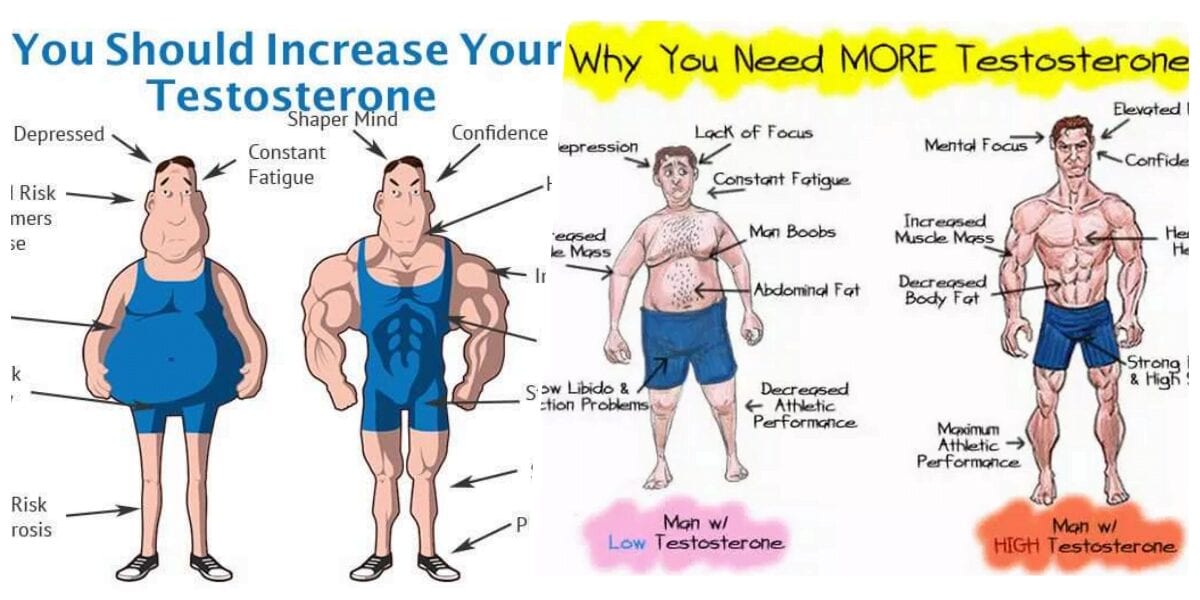 Testosterone is involved in the normal distribution of fat in the body.
Testosterone is involved in the normal distribution of fat in the body.
In addition, this hormone affects the formation and normal maturation of bone tissue, thanks to testosterone, bone growth zones are closed in time. The condition of the skin is also directly related to testosterone, since the sebaceous glands function under its action. Thus, the appearance of a man depends entirely on the amount of testosterone.
A lower timbre of a man’s voice is also the result of the work of testosterone – it is with its participation that the vocal cords thicken during puberty.
Another extremely important function of testosterone is influence on sexual activity and sexual behavior . Testosterone affects certain areas of the brain, leading to the appearance of sexual desire (libido), not only in men, but also in women.
Normal erection is also ensured with the active participation of testosterone: it has been proven that under its action there is a complete relaxation of the cavernous bodies, testosterone contributes to the normal blood filling of the vessels of the penis.
Undoubtedly, sexual function and physical development determine the well-being and attitude of a man. However, the role of testosterone is not limited to this. In fact, there is not a single organ system that is not affected to one degree or another by testosterone.
Cardiovascular system:
- contributes to the expansion of the coronary vessels
- slows down the process of atherosclerosis
- prevents the development of cardiac hypertrophy in arterial hypertension
- reduces the symptoms of coronary heart disease
Urinary system:
- prostate condition
Hematopoiesis: Testosterone affects the maturation of erythrocytes (red blood cells) in the bone marrow.
Central nervous system: Testosterone affects the following processes:
- attention, memory and speed of thought
- mood (a large amount of testosterone contributes to aggressive behavior, low – on the contrary, causes depression)
- spatial orientation
- marked antidepressant effect
Thus, testosterone is “what really distinguishes men and women, testosterone literally forms our ability to be creative, intellect, way of thinking, energy, desire to understand various things. It influences and controls not only the potential we have, but also the benefits we derive from it. It governs our sexual and communicative behavior” (Anna Moire, The Brain of the Sexes).
It influences and controls not only the potential we have, but also the benefits we derive from it. It governs our sexual and communicative behavior” (Anna Moire, The Brain of the Sexes).
How does testosterone deficiency manifest itself?
The effects of testosterone on the body are described above, so a deficiency can manifest itself with various symptoms, the most common being:
- depression
- deconcentration
- fatigue
- decreased muscle mass and strength
- decreased sex drive
- erectile dysfunction – problems developing and maintaining an erection
- infertility due to a decrease in the number of spermatozoa
- osteoporosis (cause of brittle bones)
- hot flashes
- shrinking and soft testicles
- anemia (low red blood cells)
- prostate reduction
Why can a man’s testosterone level be reduced in adulthood?
It has been found that the level of testosterone in men from about 30 years of age begins to gradually decline, each year by 1-2%. As a result, by the age of 50-55 (and in some cases even earlier), the testosterone content can be only about 1/2 of its amount at a young age. In addition, with age, the amount of a special protein in the blood that binds sex hormones increases, which also leads to a decrease in biologically active testosterone. Developing a state called age-related hypogonadism .
As a result, by the age of 50-55 (and in some cases even earlier), the testosterone content can be only about 1/2 of its amount at a young age. In addition, with age, the amount of a special protein in the blood that binds sex hormones increases, which also leads to a decrease in biologically active testosterone. Developing a state called age-related hypogonadism .
The amount of testosterone in adulthood and old age also depends on genetic (congenital) factors, such as the sensitivity of body tissues to the action of testosterone.
Various diseases of the internal organs play an important role in testosterone levels.
What diseases can lead to testosterone deficiency?
In addition to physiological factors, acute and chronic diseases and medications can lead to hypogonadism, which ultimately exacerbates the age-related decline in testosterone levels.
Among diseases of the internal organs, low testosterone levels can be caused by:
- chronic obstructive pulmonary disease, bronchial asthma
- ischemic heart disease
- arterial hypertension
- diabetes mellitus
- obesity
- cirrhosis of the liver
- chronic alcoholism
How do drugs affect testosterone and sexual function?
Medicines taken for various diseases can negatively affect the level of testosterone in the blood. Therefore, self-medication is unacceptable, only a doctor can prescribe treatment for you, taking into account possible adverse effects on sexual function.
Therefore, self-medication is unacceptable, only a doctor can prescribe treatment for you, taking into account possible adverse effects on sexual function.
What kind of drugs are these:
1. used for high blood pressure:
- methyldopa
- clonidine
- reserpine
- β-blockers (atenolol, anaprilin)
- prazosin
2nd diuretic:
- veroshpiron
- hypotazid
- chlorthalidone
3. affecting the heart:
- digoxin
- verapamil
- antiarrhythmics
4. affecting the central nervous system:
- antidepressants
- sleeping pills
- amphetamines
5. affecting the gastrointestinal tract:
- Cerucal
- ranitidine
How is testosterone level determined?
To find out what testosterone you have, you need to take a blood test in the morning (preferably between 7 am and 11 am), because it is in the morning that the testosterone content in the blood is maximum.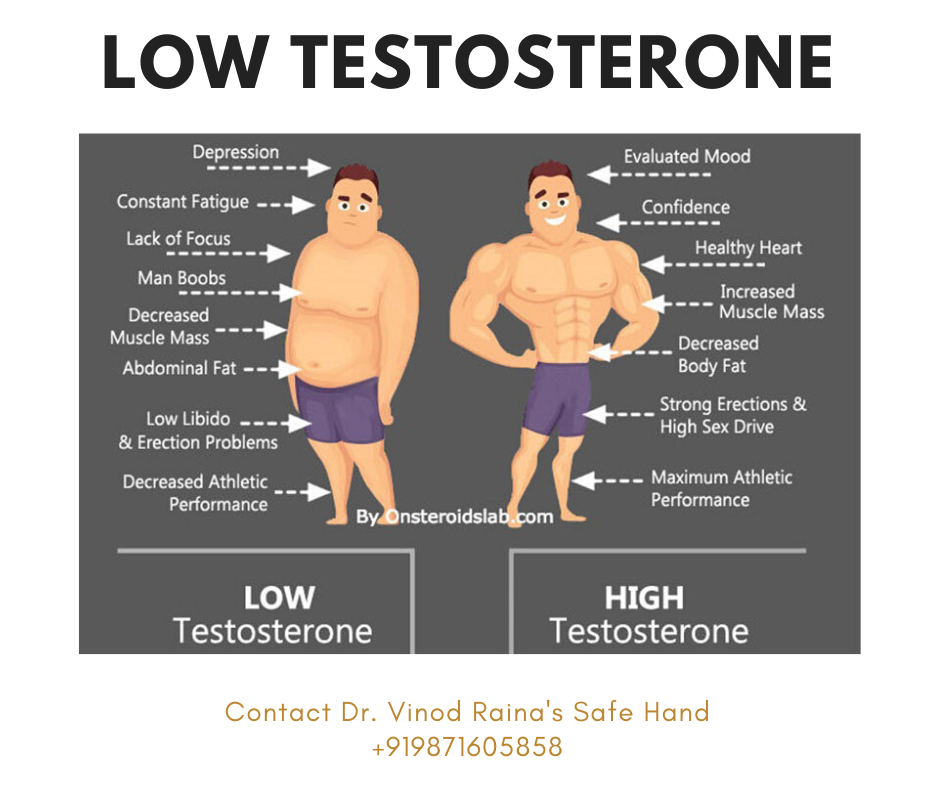 In addition, other special tests are also needed – determining the level of LH, a protein that binds sex hormones, as well as a number of other tests that the doctor will prescribe based on the results of the examination.
In addition, other special tests are also needed – determining the level of LH, a protein that binds sex hormones, as well as a number of other tests that the doctor will prescribe based on the results of the examination.
At the same time, testosterone deficiency can be suspected by clinical symptoms. For this, several special questionnaires and scales have been developed. By answering a few questions, you can guess whether testosterone is low or not.
Androgen Level Scale
1. Do you notice a decrease in sexual desire (decreased pleasure from sex, lack of desire for sexual intercourse)?
2. Have you become less energetic?
3. Did you notice a decrease in physical strength and endurance?
4. Have you lost height?
5. Have you noticed a decrease in “pleasure from life” (feeling that the peak of life has been passed)?
6. Have you become sad and/or irritable?
7. Do you notice a decrease in the quality of erections?
8. Have you noticed a recent deterioration in your ability to participate in sports?
9.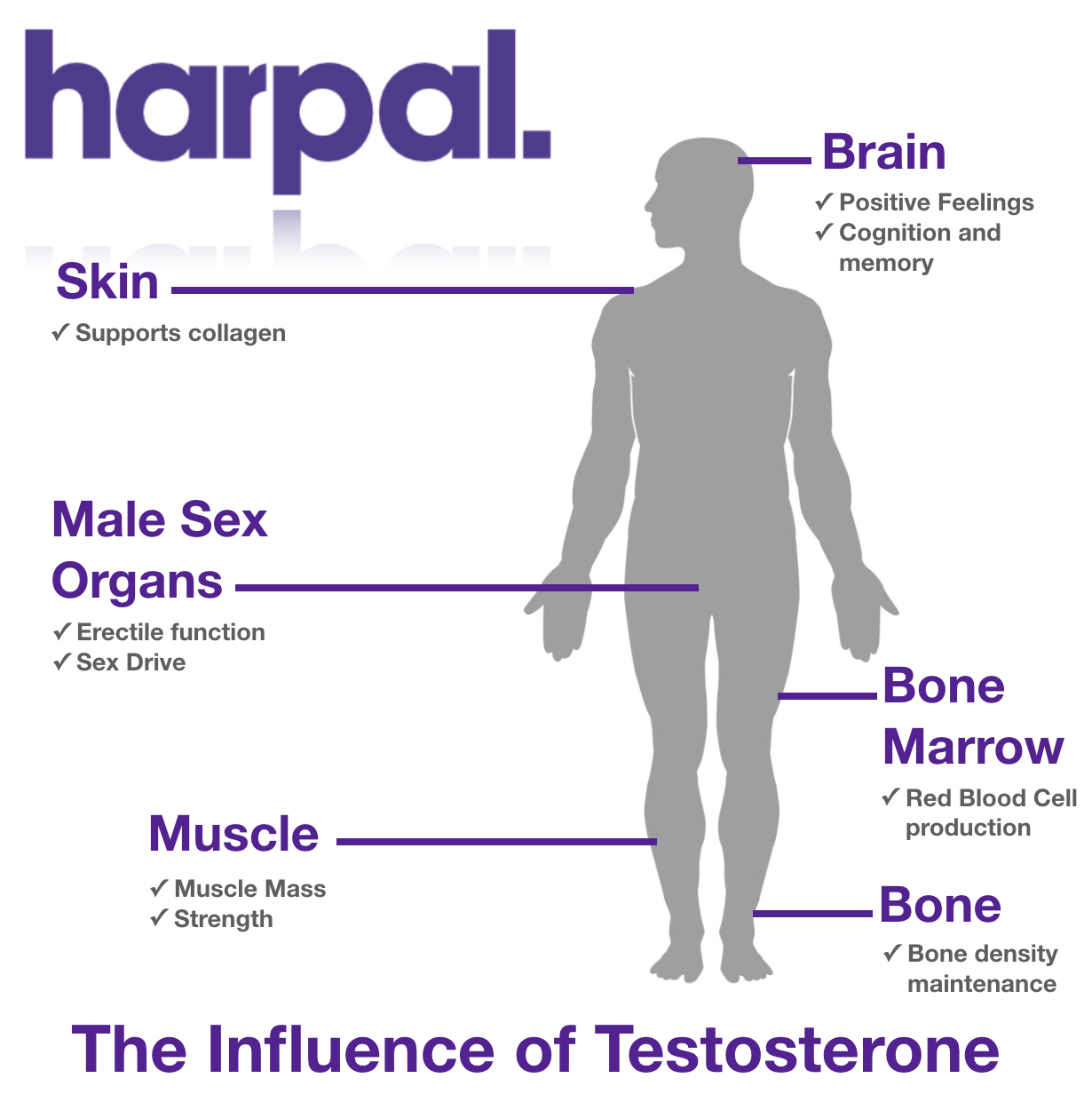



/GettyImages-548313037-Westend61-56a516255f9b58b7d0dac859.jpg)